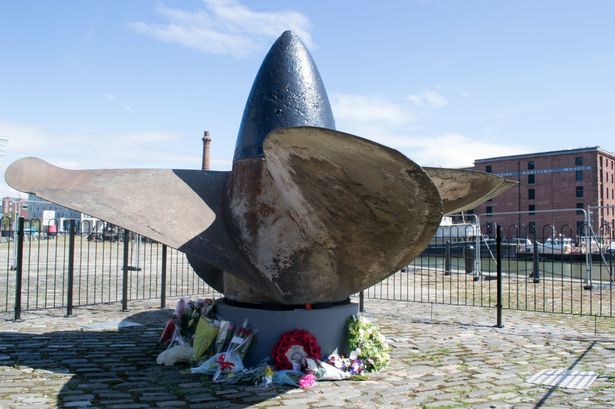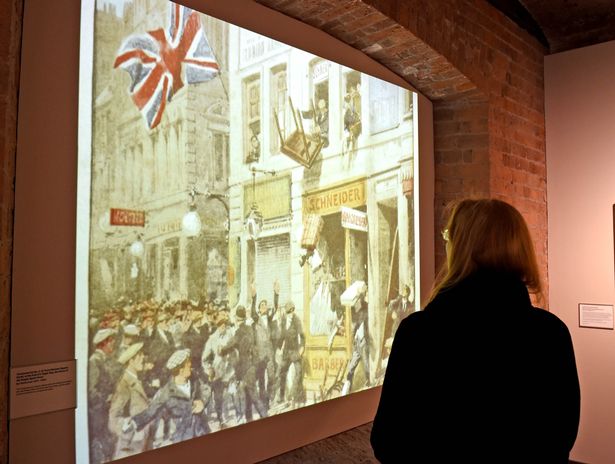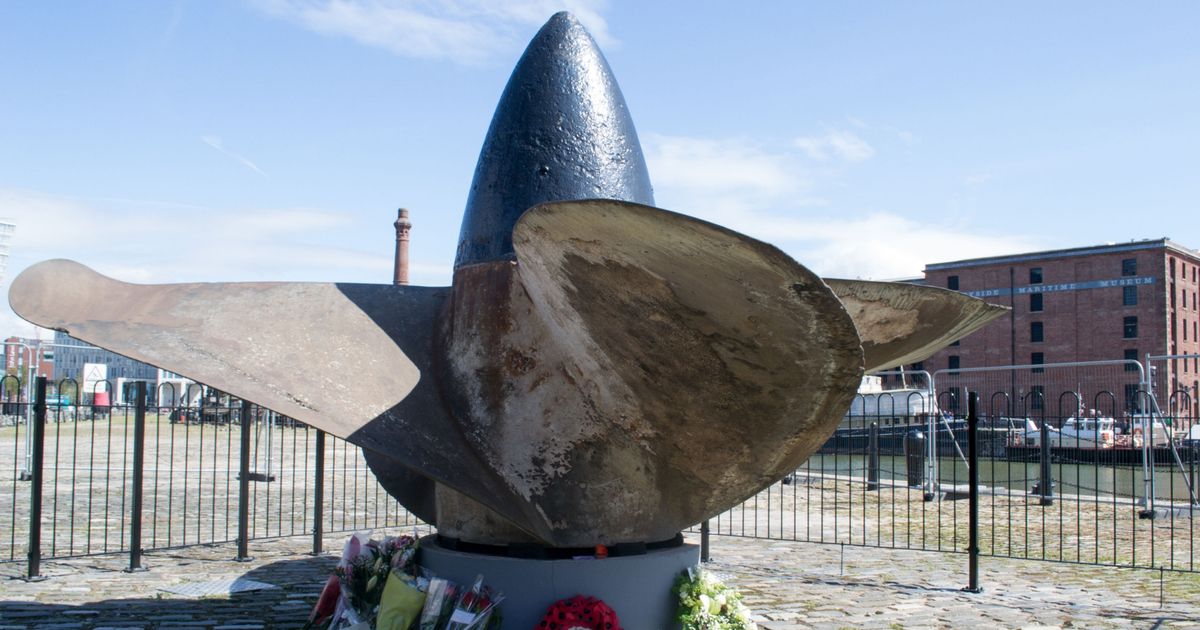The propeller is one of only two left in the world with its twin located in the USA The Lusitania propeller on Mann Island
The Lusitania propeller on Mann Island
A salvaged propeller from a downed First World War ship carrying a Liverpool-based crew is to be moved from its city centre location. A bronze and cast iron propeller from the HMS Lusitania was purchased by the Maritime Museum in 1989, having been salvaged from its wreckage seven years earlier.
For more than 35 years, the four-bladed port-side propeller and cone has been mounted quayside on the Canning Graving Dock. The docklands area is undergoing a major upgrade as part of the Waterfront Transformation project which will bring about changes to the siting of the monument.
Now National Museums Liverpool has submitted plans to Liverpool Council to create a new long-term home for the relic, which acts as a meeting point for commemorations of the ship’s sinking every year. Documents released by NML said a new section of the waterfront near to the Museum of Liverpool has been identified as the most suitable location.
The propeller is an object owned by NML as part of its museum collection. According to a heritage, design and access statement, made of bronze and cast iron, it was constructed in around 1908 as a replacement for Cunard’s RMS Lusitania, a transatlantic ocean liner, Royal Mail Ship and Royal Naval Reserve Merchant Vessel, built in 1904-06 to Admiralty specifications to allow its use as a wartime auxiliary cruiser in return for government funding and postal contracts.
 Lusitania: life, loss, legacy exhibition at Merseyside Maritime Museum(Image: Gavin Trafford)
Lusitania: life, loss, legacy exhibition at Merseyside Maritime Museum(Image: Gavin Trafford)
Having been brought into action as an armed merchant cruiser, the Lusitania was carrying around 1,960 passengers and mostly Liverpool-based crew and a small amount of British munitions from America when it was struck by a torpedo fired by a German submarine on May 7, 1915.
It sank almost instantly, with the loss of 1,191 lives, 11 miles from the coast of Ireland.
The loss of 128 American civilians, on an unarmed ship, prompted both local and national outrage was a key factor in America’s shift of opinion against Germany. In 1982 three of the Lusitania’s four propellers were salvaged from the wreck.
An annual event, held in front of the propeller, commemorates the 7 May anniversary of its sinking.
The second salvaged propeller is mounted in the art, artefacts and sculpture garden at the Hilton Anatole Hotel in Dallas, America, while the third was melted down.
 The Lusitania moored in the Mersey. Photo: PA Wire
The Lusitania moored in the Mersey. Photo: PA Wire
The planning document said the wider waterfront regeneration scheme has created the opportunity to relocate the propeller from its current “unsatisfactory” position and “relocate it to a new site better aligned with its commemorative significance.”
The statement said: “The project seeks to relocate the Lusitania Propeller to the Waterfront to the immediate west of the Museum of Liverpool, enhance its character and appearance through the removal of the existing poor-quality railings, and promote engagement through the provision of new, illuminated, interpretation.
“This aims to increase footfall around the propeller, provide a more fitting environment for commemoration and memorialisation by family members, and enhance this section of the waterfront as a whole, the setting of its heritage assets and, in particular, the setting of the war memorials to the site’s immediate north.”
